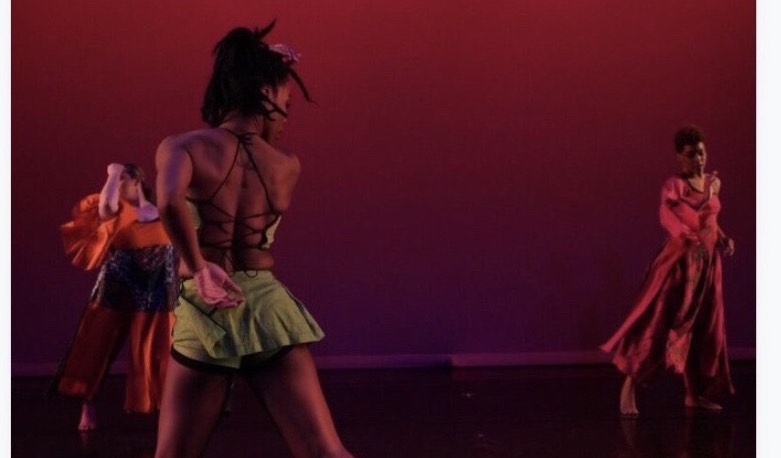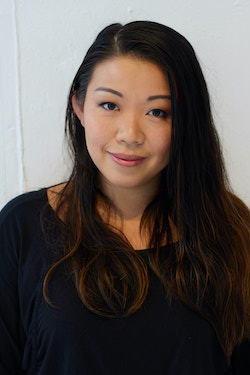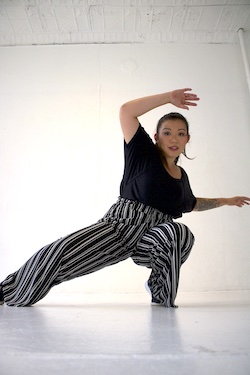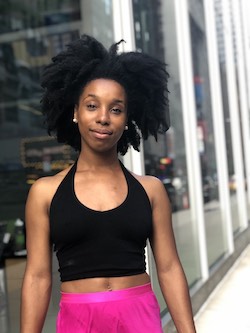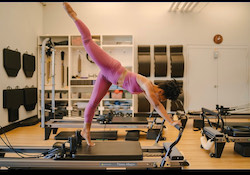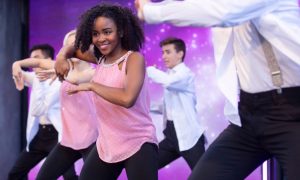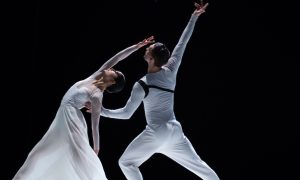Have you ever taken time away from dance? Dancers do so for multiple reasons, some intentional and some unintentional: pregnancy, injury, academics or career endeavors, family obligations, and more.
What’s it like to step away from dance? What’s it like to come back? How can we make the best of it at either of those points in time, or at least ease the experience? In this COVID era, some dancers have stepped away from the art form for a time or have thought more deeply about their relationship with it — so these questions have become particularly key.
For this second part of a two-part series, Dance Informa spoke with two more dancers who stepped away from dance for a time — to learn about what that was like for them, what was helpful through it, how they’re moving forward from here and more. Check out Part I here, featuring two other dancers who stepped away and came back in their own ways. Let’s leap in!
Linda Kuo: Called back to roots
Linda Kuo, born in Taiwan and raised in Hawaii, started dancing when she was three — first Hula, then jazz, tap, ballet and hip hop (“typical studio styles,” Kuo says). A turning point moment came for her when she saw Madonna’s “Vogue” video” — and she knew that she wanted to be a back-up dancer. That was despite the arts being seen as a hobby, and certainly not as a career, in her Asian-American immigrant family, Kuo shares.
Attending college in Boston, she had “cool opportunities” such as starting up and teaching a hip hop class, getting paid to dance at Boston Celtics games, and visiting NYC to take class every so often. After school, she moved back to Hawaii to work at an ad agency. She did teach and take class, but sometimes missed the quality and diversity of classes available for committed adult dancers in NYC.
Yet, Kuo got another advertising job in NYC, and was able to relocate there. She auditioned to train at Broadway Dance Center and made it! She also worked with their marketing team, so was able to put those skillsets to work. Kuo also got to work with a few contemporary dance companies and as a back-up dancer. Yet, sadly, it wouldn’t last forever; health emergencies in her family led her back to Hawaii. “That was hard because I had to leave behind what I’d built,” she shares.
In Hawaii, she did take class here and there, but at some point, she stepped away from dance entirely, for about four to five months — the first main time she did. “It felt too [emotionally] heavy to move my body,” she explains. “I could go through the movement and pick up the choreography, but the passion wasn’t there, and there was a disconnection with the movement. I just didn’t want to take class.”
Yet, with being inspired by community and giving, dance called her back; she began offering free classes for kids, through local dance studios, after school on Fridays. Soon enough, she had dance friends from L.A. and NYC teaching with her. These classes grew into the bi-coastal 501c3 Dancers Unlimited, with home bases in both Honolulu and NYC.
The organization’s work and mission includes dance education and performances more broadly available and accessible. “Starting Dancers Unlimited wasn’t entirely altruistic,” she notes with a little laugh, “because it helped me to heal” — from losing what she had built in NYC, health challenges in her family and more. “Dancing with kids again — they made me laugh and feel better. They reminded me why I love to dance.”
Then came a second time when she stepped away from dance, with — as is common with dancers who become mothers — pregnancy and a postpartum period. Injury was part of the mix there; Kuo explains how she jumped back into rehearsal two weeks after the birth of her son and — with pregnancy hormones still making her quite mobile — she badly injured her IT band. When she recovered from that injury and came back to dancing safely, it wasn’t easy. “I really had to get to know my body again,” she reveals. “Childbearing and childbirth really take a toll on the body.”
Kuo is still dancing and teaching, and loves doing so. Yet, that’s evolved for her. For example, “I’m coming more and more to accept that I don’t have to be in the pieces I choreograph,” she notes. She also seemed to not have regrets about the times she wasn’t dancing, either voluntarily or involuntarily — in part because she made good use of that time. She explains that she was able to build business and development skills, as well as additional creative skills such as filmmaking. “As a dance artist, it’s important to have multiple skills,” in artistry as well as professional skills (such as networking and entrepreneurial aptitudes), she believes.
Whatever she learns, whatever she does, it feels like dance is part of her — roots keeping her grounded, content, fulfilled. Even with connections in NYC and L.A., she’s also rooted in the sand and soil of Hawaii. “There’s something about the land and water there…it’s just so nourishing,” she says dreamily. She’s found ways to bloom far and wide from those roots — and in the process, bring the magic of dance to so many who may otherwise never have known it.
Jordan McKinzie: The body knows
Jordan McKinzie has done a lot in dance, somatics and fitness. She majored in Biology and Dance at Long Island University (LIU). “I’ve always wanted to dance but also loved science!” she shares passionately. LIU was a great place for her to be with that particular intersection of passions, with a great dance science/medicine program — with a full anatomy and biomechanics lab.
McKinzie also got interested in choreographing, and began to build choreographic skills, in college. She studied composition and choreography under Donna Uchizono. After graduating, she got certified to teach Pilates, worked as a personal trainer, and learned other somatic forms. Performance-wise, she’s danced professionally with companies such as Muniz and Makers, and performed works by MICHIYAYA Dance, Ronald K. Brown, Nathaniel Hunt, Emily Wexler, Ori Flomin and more.
Prior to COVID, she was starting to feel a new and strange reticence to dance — with being in and with her body all day through her somatics and fitness work, and recovering from an injury. Her relationship with her body began to change, and it just started to feel physically and emotionally overwhelming for her to add on to that with dance. “I would teach and then feel like I was done with moving my body, which was not like me. I was disconnected from my body,” she notes.
COVID really “magnified” that feeling for her, McKinzie explains, not to mention still handling injury. She would take class over Zoom in her living room, and “not really feel like a dancer” — it just felt off. Her father also got COVID, and the “whirlwind of emotions” she was experiencing just got to be too much. For three weeks, she stepped away from taking class or otherwise dancing in any formal, codified sense — so that she could heal, reflect and recenter.
She stayed creative, however: journaling, writing, knitting and improvising. She would write little love notes to herself and her body, as well as gratitude notes. That would inspire improvisation. She would even just lie on the floor and do diaphragmatic breathing. Then came the uprisings around George Floyd, and she had to get back into her body. “I needed to explore grief in my body,” she shares.
As for where McKinzie’s creativity and artistry are now, all of that journaling and improvisation has led to a dance film process, a collaboration with harpist Julianna Beckel. She maintains a gratitude practice and keeps a gratitude jar for those little notes of gratitude and love. Diaphragmatic breathing is also something that she’s added to her daily practice, often before and after rehearsal.
As for taking class, the first time McKinzie was back in the studio — even masked and physically distant — she got emotional (something many dancers likely experienced). Coming back into the studio was also physically challenging for her — “very different than dancing at home!” she notes with a little laugh. She came up with a training program for herself according to what she needs to work on to get back her full strength and stamina. “Ease back in, and give your body the full attention that it needs,” she encourages fellow dancers.
McKinzie has also gained a deeper acceptance that there are things we can’t control — like a global pandemic stalling live performances and classes. She also affirms that it’s okay if you don’t want to dance on particular days, and that in those times, self-love is a more productive response than self-judgment.
“That’s hard for us dancers,” she says. “We’re critiqued so often, and we learn [self-judgment] as a behavior.” A more effective approach for getting back to an artistically fruitful place is asking ourselves, “What can I do to drive some creativity?” she advises. McKinzie also underscores the importance of going back to fundamentals, asking what your body needs on any particular day (because it will shift day to day), and good-old gratitude.
To the question of if she’ll step away from dance again, for any reason, she “hopes that it’s not for a very long time.” She shares that COVID taught her several things that make her a stronger artist and person — a key one being that “dance is not my identity. It makes me a better person, and sharing it is my love and passion, but I’m so much more than that.” That, along with stepping away from dance for a time, has led her to question what it’d be like if she just didn’t dance any longer. “That’s not what I want for my life, because I have to share through dance, but it’s a useful — and hard — thought exercise!” she notes.
Another important realization for her was that it’s okay to explore other creative interests and endeavors. “If I delve into something else creative, or don’t make work or perform, it doesn’t mean that I’m any less of an artist or a dancer,” she affirms. Beyond her, she knows many dancers who’ve had career changes, in and out of the field, over the course of COVID — a big part of that, she believes, is people “realizing what their body needs.”
For McKinzie, it ultimately comes back to the body and one’s connection with it. She’s been thinking more deeply about her relationship with it. “I’m relearning my body and deepening my love for it,” she shares. Professionally, she’s been thinking about offering functional training and movement classes for dancers, and also plans on returning to graduate school for athletic training. “I’ve had so many injuries, and if I had had that anatomical and biomechanical knowledge, it really would have changed things,” she reflects.
Beyond her, she underscores how much dance really shapes our relationship with our body, and the capabilities that emerge from that shaping, how “unparalleled” dancers are amongst artists. McKinzie also underscores the challenges that can come with balancing dance, other interests and various practical responsibilities. “But if you’re truly passionate, it’ll work!” she shares joyfully. Coming back to the body, and its immense wisdom, can be just the thing to get us there.
By Kathryn Boland of Dance Informa.


